
Across the globe, there are more than a billion people living with a disability. From mobility issues to cognitive impairment, disabilities affect many people’s lives, whether by living with or loving someone who is differently-abled. Would you like to have your home professionally remodeled to adapt to your loved one’s needs? Are you considering tackling the modifications yourself? This guide will help you learn how to enhance accessibility from room to room. In this guide, you’ll find tips for easy accessibility accommodations for:
- Bathrooms
- Kitchens
- Outdoors
Find an accessibility contractor who can make several small adjustments around your house. This is called retrofitting. When you hire a pro to retrofit your home, you can get modifications done according to your loved one’s needs.
Or, hire a home modification pro to create a design plan that goes a step further to tailor your home specifically for your family. These alterations or additions help your loved one navigate their home safely and feel like the space more naturally embraces what makes them special. Meanwhile, you can also support them as they continue to live as independently as possible.
Bathroom Modifications
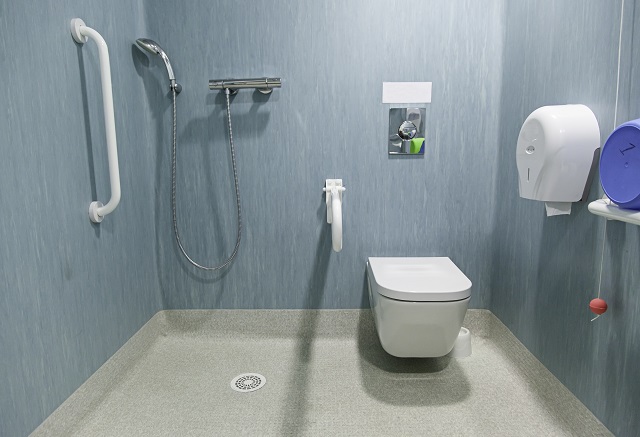
The bathroom is known as a place of privacy and comfort, but it is also known as the room most likely to have unpredictable hazards. For example, an able-bodied person may have no trouble steadying him or herself while getting out of the tub, but for someone who uses a walker or wheelchair, there is an alarmingly elevated risk of injury from a slip or fall.
Nearly two-thirds of emergency room visits are due to bathroom falls. In addition, bathrooms can be a very confusing place for people dealing with low vision or a cognitive impairment. Someone with partial blindness might not be able to tell that the toilet seat is down. A loved one with Alzheimer’s disease or dementia might forget what instruments they need to brush their teeth. All three of these scenarios are not only scary and cause for alarm, but they can also be depressing and emotionally debilitating. Here are a few accessibility tips that build both safety and confidence in the bathroom:
- Wheelchair Access: First, you need to ensure there is enough room for wheelchair maneuverability. Your loved one needs easy access to enter and exit the room, which widening narrow doorways and increasing square footage of the bathroom itself. A low sink with room for knees underneath can help them independently conduct tasks like brushing teeth and washing hands. Installing handrails beside the tub and toilet also empower them to use every element in the bathroom on their own without needing to ask a family member for help each time.
- Vision Impairment: For someone with low vision or blindness, the bathroom can be a dreadful experience. Be sure to use contrasting colors and textures to help them navigate the room safely. Handrails, no-slip mats and flooring are also essential safety precautions. To help them stay independent, be sure to label items they will need and use often. For low vision, brightly colored tape might be enough — but you’ll then want to install bright lighting — or for people with blindness, using textured tape or even braille might have a better impact.
- Cognitive Disabilities: When a person with dementia enters a bathroom, he or she could forget their purpose in a matter of minutes. They can misremember how specific items work, like confusing the sink’s cold-water knob for the hot water one. That’s why it’s important that you consider installing special faucets that check temperature. As with vision impairment, labeling items and areas can help them remember their usefulness. Balance is also an issue with dementia and Alzheimer’s, so handrails and no-slip surfaces can be fundamental in reducing injury and promoting self-care.
Kitchen Modifications
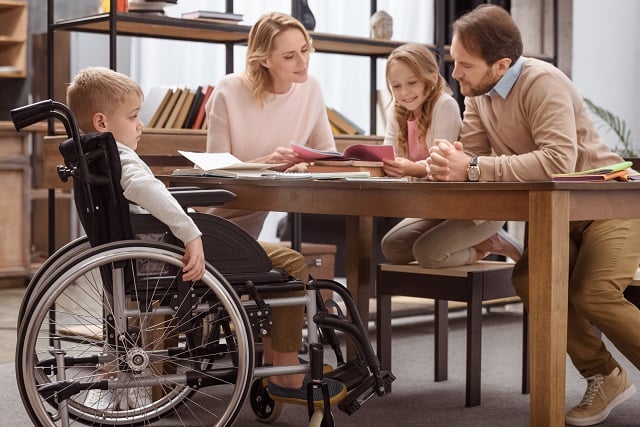
For many families, the kitchen is the heart of the home. Families often prepare and share meals and memories together here. But for a person with a disability, the kitchen can feel unwelcoming, cold and even forbidden. How can someone with low vision cook for the family? How can a person in a wheelchair help clean up after dinner?
For many people with a vision, mobility or cognitive impairment, the kitchen can be a place where they feel helpless. However, making kitchen accessibility a priority not only reduces the chance of an accident or safety issue, but also allows your loved one to feel valued. Here are a few tips for easy kitchen modifications:
- Wheelchair Access: Low counters with space underneath for a wheelchair is key for helping a family member with mobility issues with independence in the kitchen. Low cabinets, side-hinged oven doors, and sinks with drains toward the back help make the kitchen a place that a person in a wheelchair can maneuver in with ease and comfort.
- Vision Impairment: Make sure everything that your loved one needs is labeled and stored in a regular place. Put hazardous materials, like cleaning products, out of reach, and make sure the fire extinguisher is in an accessible spot. Timers that count down out loud can help them keep track of dishes in the oven, while painting cabinets with contrasting colors or lining them with varying textures can help them navigate spaces to prepare food.
- Cognitive Disabilities: As with the bathroom, the kitchen can be a perilous place for slips and falls. Installing no-slip flooring and mats can help when water splashes from the sink, freezer or dishwasher. Keeping all hazardous chemicals out of reach is vital to safety. Consider keeping a special drawer for snacks so that your loved one can help him or herself when they are hungry. Since dementia is a progressive disease, meaning it can get worse over time, supervised kitchen activities are encouraged. You can have them help you prepare meals or clean-up, but whether they should navigate the kitchen alone depends on the severity of their specific situation.
Outdoor Modifications
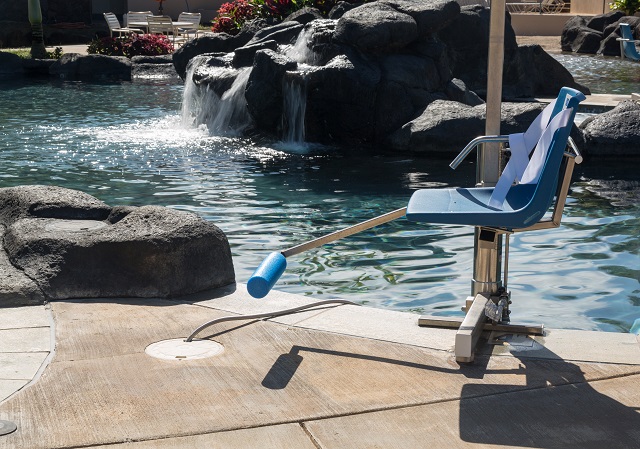
A home is more than just what’s in between the walls; being able to participate in outdoor activities safely is important to ensuring your loved one with a disability feels included and independent. Whether you want to empower them to be able to check the mail or your whole family likes to gather around the firepit, a crucial part of accessibility happens in your own backyard. Here are a few considerations to keep in mind when changing outside for disabilities:
- Wheelchair Access: Create walkways that are level and clear of debris. If there are even a few stairs, a ramp is the best way to make more space accessible and is well worth the cost to build a wheelchair ramp. Ensure outside seating areas have tables at positions and levels where a wheelchair can easily navigate. Consider adding an accessibility lift if you have a pool. Install doorknobs and locks at levels that are easy for them to open, close and secure.
- Vision Impairment: Find a landscape lighting pro near you to line walkways with bright lights. Trim shrubs and tree branches to create a clear path. Use texture to inform a person with vision impairment of potentially dangerous areas, like a grill or a fire pit.
- Cognitive Disabilities: Wandering away is a genuine concern for those living with someone suffering from dementia. Always lock doors with a deadbolt. Going outside with your loved one to enjoy activities like reading, gardening or eating is fine, but if they venture out alone, make sure your property is surrounded by secure, locked gates. If you have a pool or spa, be sure those areas are secure and off-limits as well.
When you live with someone with a disability, making sure your home is comfortable, accessible and safe are your top priorities. However, it can be just as important that you ensure that the living environment is also empowering and stimulating. Homes that focus on enhancing abilities — as well as protecting for disabilities — are homes where your loved ones can thrive.
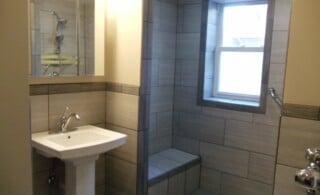 Checklist: Disability Remodel
Checklist: Disability Remodel 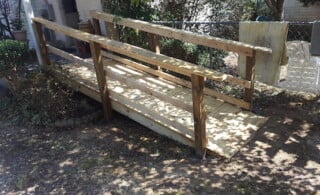 Remodeling With Seniors in Mind
Remodeling With Seniors in Mind 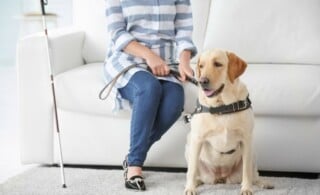 The Ultimate Guide to Optimizing Your Home for a Service Dog
The Ultimate Guide to Optimizing Your Home for a Service Dog  Remodel for Senior Living: Keeping Things Rolling Along
Remodel for Senior Living: Keeping Things Rolling Along  3 Bathroom Remodels You Can Afford RIGHT NOW
3 Bathroom Remodels You Can Afford RIGHT NOW 

Are You Familiar With This Topic? Share Your Experience.